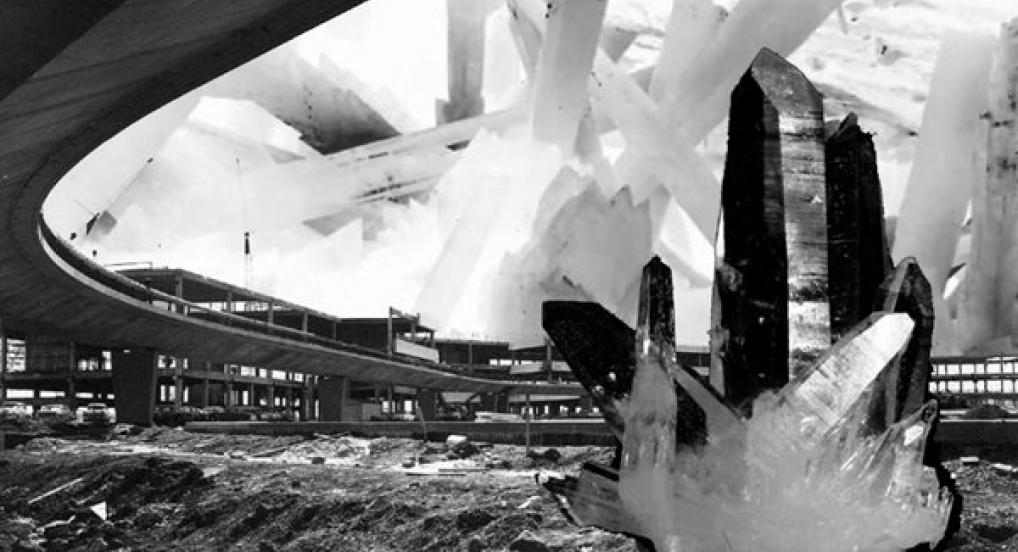Part of their new strand of screenings at Close-Up, Filmarmalade presents a screening of moving image work by artists Pil and Galia Kollectiv. Pil and Galia Kollectiv's films are grounded in an interest in the relationship between art and politics. Following speculative scenarios to their logical conclusion, they re-imagine the consumer riot as a future re-enactment, Marx's Capital as an asparagus ballet, archaeological research at Stonehenge as a forgotten ritual and an economic endgame as a dialogue between computers.
Their new work, The Plague and Its Segmentations, presented here as the world premiere screening continues their investigation of fractured temporalities and science fiction narrative as a means of interrogating the present.
Programme:
- The Future Trilogy (UK, 2006-09, 48 min, Colour, Digital)
In November 2005, IKEA announced a new store opening in Edmonton to be accompanied by an offer of a significant price reduction on leather sofas. When 6000 people arrived to compete for the discount, a riot ensued, injuring 16 shoppers. The Future Trilogy takes this event as the starting point for a speculative history of a fictional future. The Future for Less (2006) imagines the consumer riot as the foundation of a new totalitarian state religion imposing the tenets of modernism on the masses. In Better Future, Wolf-Shaped (2008), a rural cult perverts this official creed through pagan rituals of architectural worship performed at Celtic burial sites in Cornwall. The final instalment, The Future Is Now (2009), similarly shot on 16mm colour film, stages the triumphant conquest of the industrial wasteland surrounding IKEA Edmonton as a popular uprising, revisiting the original riot as a future re-enactment.- Asparagus: A Horticultural Ballet (UK, 2007, 30 min, Colour, Digital)
Asparagus: A Horticultural Ballet was part of the project commissioned by The Showroom, London. Shot at The Showroom and at Battersea Park, where the costumes were made as part of a residency at the Pump House Gallery, the film is a pseudo-documentary about the rehearsal process that culminated in the live performance narrating the rise of capital in the medium of asparagus. Based on the incongruous juxtaposition of Marx's Capital with Oskar Schlemmer's Bauhaus ballet and a student performance by a member of obscure minimal synth band xex, it was staged at Conway Hall in London and SAT, Montreal, as part of the Montreal Biennial. In the film, a fake choreographer makes demands of the dancers and musicians (the band Les Georges Leningrad). The vegetables are finally let loose in the park to explore garden furniture constructed for the Festival of Britain in the 1950s.- Another Proof of the Preceding Theory(UK, 2008, 15 min, Colour, Digital)
Another Proof of the Preceding Theory was produced as part of a residency run by Artists in Archaeology in conjunction with the Stonehenge Riverside project. The film explores the relationship between science, work and ritual, imagining archaeology as a future cult. As two robed disciples stray off from the dig, they are drawn to the drone of the stones and proceed to play the henge like a gigantic Theremin. Just as a Theremin is played with the hand interfering in an electric circuit and producing sound without contact, so the stones respond to the choreographed bodily proximity. Finally, one of the two continues alone to the avenue at Avebury, where the magnetic pull of the stones reaches its climax. Shot on VHS, the film features a score by Zuzushi Monkey, with percussion and Theremin sounds mirroring the action. The performers are mostly artists and archaeologists from the art and archaeology teams. The archaeologists were encouraged to perform their normal work in the robes, in an attempt to explore the meeting points of science and ritual and interrogate our relationship to an ultimately unknowable prehistoric past where activities we do not understand are relegated to the realm of religion. Stonehenge has unique acoustic properties, it’s large sarsen stones are finely worked on the inside, left rough on the outside, intensifying sound waves within the inner horseshoe, but since their real use, having been built over centuries, remains ambiguous, the film proposes that our attempts to decode them may themselves become encoded in their cumulative meaning for future researchers.- We Are Equilibrium(UK, 2008, 6'30 min, B&W, Digital)
We Are Equilibrium presents a dialogue between two computers. The conversation opens with a simple textbook problem in business studies, but gradually the language, mimicking the application of game theory in the business sector, becomes more abstract. The two interlocutors become adversaries trapped forever in a competition without winners.-The Plague and Its Segmentations (UK, 2016, 10 min, Colour, Digital)
In his seminal text on social control, Discipline and Punish, Foucault describes the security procedures put in place for the containment of the plague in 17th century France. The Plague and Its Segmentations uses this scenario as a starting point for a fictional future account of a Ballardian collapse of time and space in the suburban setting of the commuter town.
Total duration ca. 130 min with intervals
Tickets: £12 / £10 conc. / £8 Close-Up membersBox Office: 020 3784 7975
More info: http://www.kollectiv.co.ukhttp://www.filmarmalade.co.uk
